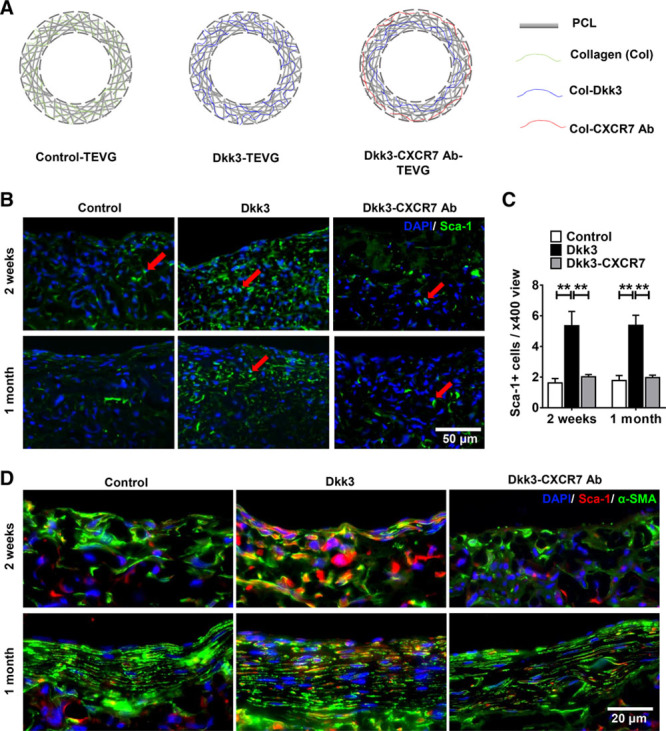Figure 7.

Dkk3 (dickkopf-3) increases Sca-1+ progenitor migration and smooth muscle differentiation. Schematic illustration of the 3 types of tissue-engineered vessel grafts (TEVGs). Control TEVGs composed of polycaprolactone (PCL) and collagen fibers; Dkk3-TEVG composed of PCL and Dkk3-collagen fibers; Dkk3-CXCR7 ab-TEVG composed of PCL, Dkk3-collagen, and CXCR7 antibody collagen fibers. B, Representative immunofluorescence images of the cross sections of TEVGs displaying Sca-1+ progenitor cells recruitment into the grafts detected with anti–Sca-1 (stem cell antigen-1) antibody (green), at the time points indicated. C, Quantification of Sca-1+ progenitor cell infiltration into the 3 types of TEVGs. DKK3 delivery significantly promotes the infiltration of Sca-1+ progenitor cells into the grafts. The incorporation of CXCR7 antibody in the grafts markedly inhibits infiltration of Sca-1+ progenitor cells into the grafts. D, Representative immunofluorescence images of the cross sections of TEVGs exhibiting double immunostaining with anti–α-SMA (α-smooth muscle actin; green) and anti–Sca-1 (red) antibodies, at the time points indicated. The increased contribution of double-positive cells (Sca-1+/α-SMA+) to the smooth muscle regeneration in Dkk3-TEVGs, compared with control group, seems to decrease in Dkk3-CXCR7 ab-TEVGs. DAPI was included to counterstain the nuclei. The data presented are representative images of 4 grafts for each group and are expressed as the mean±SEM of 4 independent experiments. **P<0.01, compared with control group (2-way ANOVA, followed by Bonferroni post hoc test).
